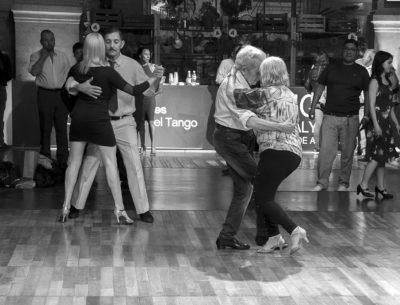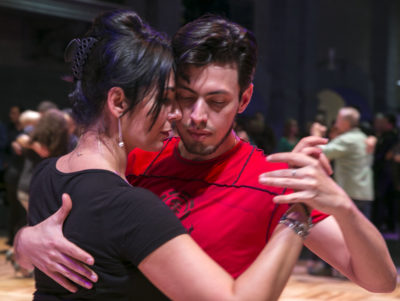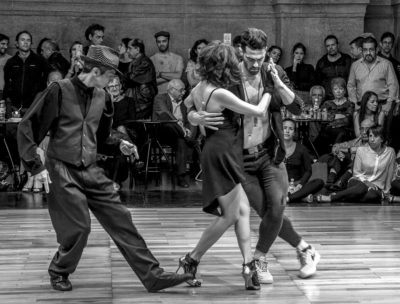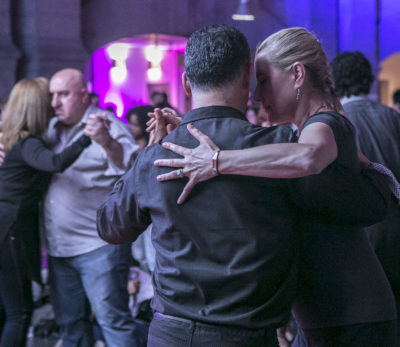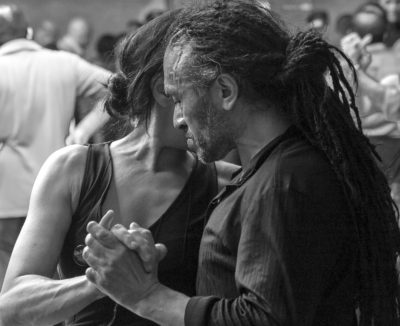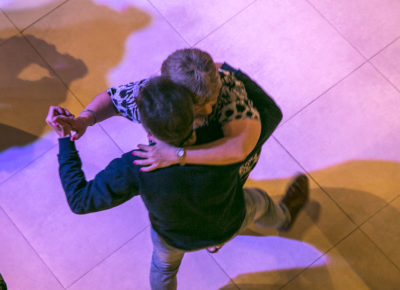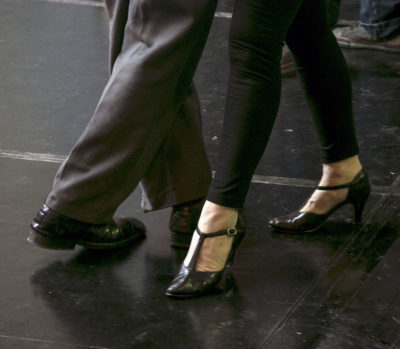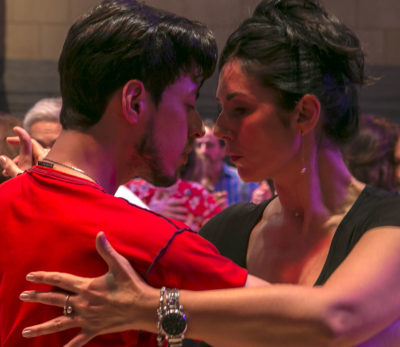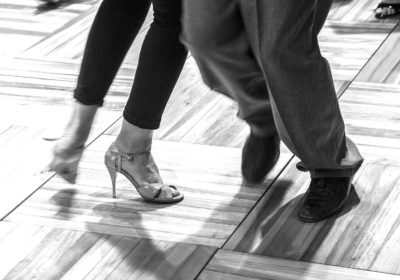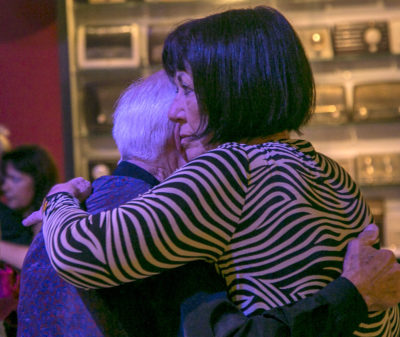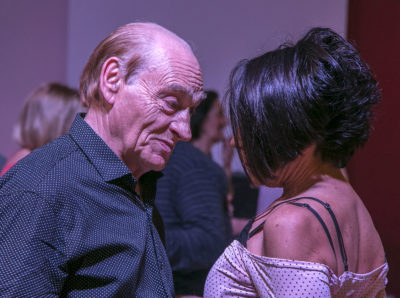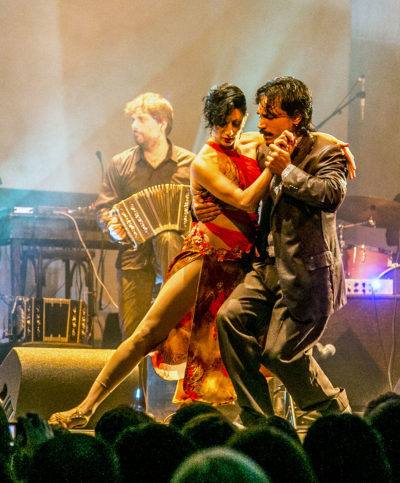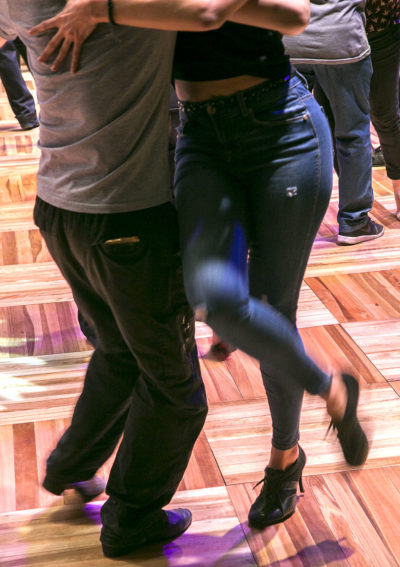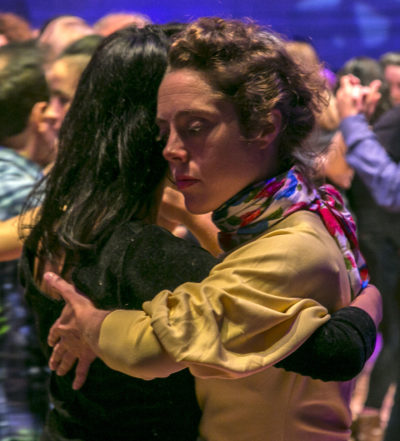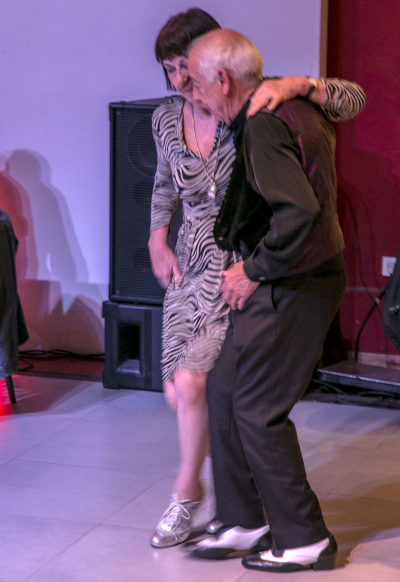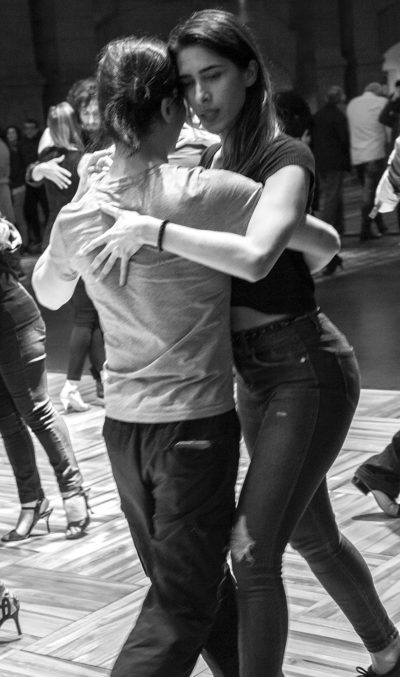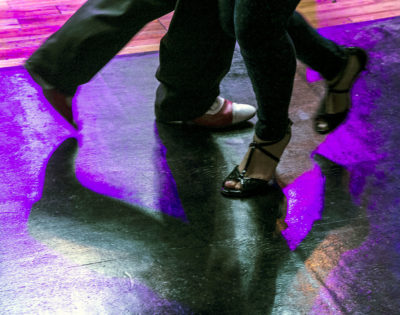Tango Spirit
Toista ääniraita – Play soundtrack
© Claudia Pisanu
Argentine musician and composer – World Music
https://www.youtube.com/watch?v=ZXwfCQllImk
Lue tarina suomeksi ↓
Read the story in English ↓
Keskustelua tangosta, isäntänä Tapani Kansa – Discussion with special guests – video, hosted by singer Tapani Kansa ↓
Osta kuva
Osta kuva
Osta kuva
Osta kuva
Osta kuva
Osta kuva
Osta kuva
Osta kuva
Osta kuva
Osta kuva
Osta kuva
Osta kuva
Osta kuva
Osta kuva
Osta kuva
Osta kuva
Osta kuva
Osta kuva
Osta kuva
Osta kuva
Osta kuva
Osta kuva
Osta kuva
Osta kuva
Osta kuva
Osta kuva
Osta kuva
Osta kuva
Osta kuva
Osta kuva
Teosten nimet on kääntänyt Kirsti Kallio.
Tango Spirit -näyttely Aino Galleriassa – keskustelua
Argentiinalainen tango Aino Galleriassa. Keskustelussa mukana Tapani Kansa, Timo Tyrväinen, Telle Virtanen sekä erikoisvieraina John ja Nina Krook
Argentine tango in AINO GALLERIA. Discussion with singer Tapani Kansa, singer Timo Tyrväinen, editor Telle Virtanen. Special guests dance teachers John Krook and Nina Krook.
Tango Spirit -näyttely Aino Galleriassa
“Tango on surumielinen ajatus, joka tanssitaan.”
– Enrique Santos Discépolo
”Täällä sanotaan, että argentiinalaiset ja uruguaylaiset poistuivat laivoista! se on sulatusuuni, josta löytyy italialaisia, espanjalaisia, ranskalaisia, puolalaisia, amerikkalaisia alkuperäiskansoja…se on tärkeä sekoitus, jonka ilmaisu on täydellisintä TANGOssa.”
– Caloi
”Tango, Tango…sinä joka olit hänen rakkautensa uskottu ystävä…Tango, Tango, nyt tarvitsen sinua apuun lievittämään hänen tuskaansa!”
– Carlos Gardel
”Pojille soitan tänään tanssittavaksi Bandoneónin, Elämä on Milonga”
– Anibal Pichuco Troilo
”Milonga saa sinut rakastumaan: Tango, syleily, lupaus jostakin uudesta ..”
– Tuntematon
Tango ja minä
Olen aina ollut jazzin ystävä. Siitä lähtien, kun aloin kuunnella musiikkia tosissani, ehdoton idolini on ollut Miles Davis (mustan labbikseni nimi oli Miles). Lapsuudenkodissani ei tangoa kuunneltu. Ja kuitenkin, 55 vuotta täytettyäni, minua alkoi viehättää tuo arvoituksellinen musiikki, yhtä aikaa voimakas ja kaihoisa, ja sen kiehtova tanssi. Kun se ”kosketti” minua ja ”valtasi” minut, se ei enää poistunut, siitä tuli lumoutunut tunnetila. Ensin aloin käydä Milongoissa, jotka vetivät minua puoleensa uutena valokuvaajana, vähän niin kuin tapahtui Ettore Scolan elokuvassa Tanssit”. Suuret huoneet, joskus hyvinkin epämääräiset, täynnä todella erilaisia ja outoja hahmoja kietoutuneina kummallisiin syleilyihin.
Hahmot näyttivät minusta aluksi toisinaan oudoilta muukalaisilta. Mutta vain aluksi; pian huomasin että milongat päinvastoin olivatkin ”oikeita ihmisiä” (eivät näyttelijöitä keinotekoisessa ympäristössä) kaikkialta, he olivat tulleet kohtaamaan kasvotusten ja syleilemään vieraiden ihmisten vartaloita, aloittaakseen läheisen, lentävän ja kurinalaisen mutta samalla luovan ja hyvin aistillisen tanssin. Ehkä monet meistä ovat unelmoineet sellaisesta. Tämä alun lähestyminen, syleily, on tangon keskeinen olemus ja henki. Sitä on mahdotonta selittää sanoin, älyllisesti. Olin lumoutunut ja liikuttunut! Kaikki tämä sai minussa aikaan erilaisia tuntemuksia: liikutusta, värähtelyä, intohimoa, kaihoa, kohtaamista, yksinäisyyttä, läheisyyttä, syleilyä, onnea, rikastuttavaa erilaisuutta, tietoisuutta. Minuakin odotti tuolla jokin. Se innosti minua valtavasti. Pian aloitin tangotunnit. On tärkeää sanoa, että saatoin vain tuntea että lähdin lentoon, jos voin sanoa niin, haha (ilmeisesti huonon tasoni takia) sinä hetkenä kun todella kuuntelin tangon musiikkia ja lauluja, annoin sen soida sisälläni, annoin sen viedä minua, unohdin askeleet ja täsmällisen tekniikan jotka aiheuttivat minulle paljon päänvaivaa. Tangon intohimo tarttui minuun! Usein tullessani yksin töistä kotiin aloin tanssia tangoa huonekalujen keskellä!! Tunsin oloni hyvin liikkuvaiseksi ja innostuneeksi. Niin paljon tarinoita ja kokemuksia on kirjoitettu tangosta ja Milongasta! Minäkin voin kertoa paljon lisää tunteista ja hetkistä!
Mutta kirjataanpa tähän lainauksia eri ihmisiltä ja lähteistä, sekä tangon ja Milongan historiaa.
Tangon tanssiminen
”Musiikki joka muuttaa elämää! Näin ajattelee yhä suurempi joukko nuoria ja aikuisia, jotka eivät voi kuvitellakaan viikonloppua ilman kiitämistä tanssilattialla tangon soidessa.”
” Mitä niin koukuttavaa kätkeytyy tämän tanssin olemukseen, Tangoklubilla, Milongassa, että se on melkein kuin huume tanssijoilleen? Mikä illan rituaalissa herättää tarpeen kokea se yhä uudelleen? Kerran kuulin, että tango elvyttää aistillisuutemme. On kaunis hetki, kun tanssijat katsovat toisiaan syvälle silmiin, ennen syleilyotetta, tuntevat sitten sulautuvansa yhteen ja antavat tangon viedä.”
”Tango haastaa tanssijansa: se on jatkuvaa oppimista, ja jokaisen parin syleily on uusi kokemus, kahden olennon kohtaaminen jotka yhdistyvät musiikin tahtiin, luoden oman tilansa maailmaan, pienen palasen jota ei ennen ollut.”
”Kun tango saa sinut valtaansa, odotat vain seuraavaa viikonloppua. Yhtenä kauniina päivänä huomasin kantavani tangokenkiäni mukanani kaikkialla. Kuka tietää, missä ja milloin tulisi mahdollisuus tanssia tangoa? Joskus sitä käy tunnilla tai haluaa vain pitää taukoa, pienen hetken. Aluksi kävin monta kertaa viikossa ja viivyin neljä tai viisi tuntia, hyvin myöhään. Humalluin musiikista, ilmapiiristä, salissa syntyvästä energiasta, syleilystä, tanssista, odottamattomasta kohtaamisesta. Se on maailmankaikkeus, jossa aistimukset hallitsevat: vartalot hämärtyvät taustavalossa, värit, kimallus – ja kenkä fetissinä. Milonga koukuttaa.”
”Tango on syleilyssä.” ”Tangon tanssijoille, joita usein kutsutaan ”milongeroiksi”, parin kohtaamisen synnyttämä tunteellinen ja fyysinen kokemus on niin merkittävä, että siitä tulee elämäntapa..” ”..Tangon tanssimisesta ei voi puhua viittaamatta (joskus ohimennen, joskus suoraan) tähän metafyysiseen törmäykseen, tähän suorastaan selittämättömään käsitteeseen joka määrittelee kahden ihmisen välisen pelin, yhteyden, joka lopulta huipentuu kohtaamiseen, julkiseen syleilyyn . Kuuluisa tangosyleily, kaksi toisilleen vierasta vartaloa yhdistyneinä, ei aistilliseen vaan taiteelliseen viettelyleikkiin: tanssiin, tanssiin. Totta kai syleilyssä voi tapahtua kaikenlaista, mutta tango on niitä harvoja tilaisuuksia, joissa syleily voi alkaa ja loppua ilman turhautumista. Mitä tangossa tapahtuu, on ehjää ja täydellistä, vaikka siitä ei mentäisi tuumaakaan pitemmälle. Tangossa ei tavoitella muuta kuin yhteyttä tanssin välityksellä niinä muutamina minuutteina, joiden aikana kolme tai neljä tangoa muodostavat erän. Ja kyseessä on tiukka syleily, niin tiukka kuin fysiikka sallii: tangossa on tanssimaailman tiukin syleily, kuitenkin aina tanssin rajoissa, ilman viitteitä viettelyleikeistä tai seksuaalisuudesta.”
”Mitä kehossa tapahtuu noiden ensimmäisten tahtien aikana kun syleilemme toisiamme ennen kuin alamme kävellä yhdessä lattialla? Mitä tanssissa tapatuu kun tuo syleily loppuu? Tangon tanssimisen kokemusta on mahdotonta kuvailla, kukaan ei voi kertoa miltä tuntuu mennä tanssilattialle ja tavata tuo
toinen ja syleillä häntä. Tangon kieli on aivan erityinen, ja vain tangoa tanssivat tietävät, että syleily on välttämätön osa tämän kielen puhumista.”
”Mutta tämä seikkailu, kun tapaa toisen joka myös tanssii ja jota emme tunne, herättää aina myös epäilyä ja pelkoa siitä, sovimmeko tanssissa yhteen ja ymmärrämmekö toisiamme. Lähestyminen, yhteys, kahden vartalon kohtaaminen sisältävät paljon tunteellista sitoutumista, siinä on sydän mukana. Tango on puhtaasti tunnetanssi, joten kohtaamisen täytyy olla sydänten kohtaamista. Näin me saamme yhteyden tanssin nautintoon.” ”Jokainen ottaa halausotteen omalla tavallaan, ja saa ajan myötä kokemusten karttuessa siihen persoonallisuutta.” ”On miehiä ja naisia, joiden käsivarsille haluaisi jäädä ja elää niin.”
Lyhyt historiallinen katsaus tangoon ja Milongaan
Tango on musiikkilaji ja urbaani populaaritanssi Riverplatensen seudulta, joka on Rio de la Plata –joen rannoilla Argentiinan ja Uruguayn välissä. Se syntyi Rio de la Platassa vuosina 1850-1890. Kaikki tapahtui suurten siirtolaisaaltojen sosiokulttuurissa, kun seudulle saapui hyvin erilaisista taustoista, läheltä ja kaukaa, siirtolaisia, enimmäkseen miehiä. Tällainen tilanne vaikutti suuresti miesten ja naisten välisiin suhteisiin.
Siellä sekoitettiin vapaasti mitä erilaisimpia musiikkimuotoja (Uruguayn Candombe, Buenos Airesin Candombe, Payada, Milonga, Habanera, Andalusian tango, masurkka, polkka, valssi, zarzuela, sainete jne) jotka tulivat hyvin erilaisista maista ja kulttuureista (afrikkalaiset, gauchot, siirtomaa-latinalaisamerikkalaiset, italialaiset, juutalaiset, saksalaiset, puolalaiset, andalusialaiset, kuubalaiset jne) – kunnes syntyi tango. Arvelun mukaan kesti noin 40 vuotta, että se vakiinnutti asemansa uutena musiikkilajina, jolla oli oma identiteetti. Tämä tapahtui 1800-luvun viimeisellä vuosikymmenellä.Tango oli ilmiselvää populaarimusiikkia, jota yläluokka ja katolinen kirkko vieroksuivat ja vastustivat, joten se kehittyi esikaupunkien köyhissä kortteleissa (Los Arrabales), satamissa, ilotaloissa, vanhoissa baareissa ja vankiloissa, missä maahanmuuttajat ja paikallisväestö kohtasivat – suurin osa oli alkuperäiskansojen ja afrikkalaisten orjien jälkeläisiä. Tämä musiikkien sekoittuminen synnytti ensin Milongan, jossa oli notkea rytmi, ja sitten tangon. Piano, viulu ja bandoneon, joista tuli tangon kolme perussoitinta, syrjäyttivät pian rummut, huilut ja kitarat. Tangoa kehitettiin lajina vähitellen niin, että siitä tuli urbaania taidetta. Sen musiikkimuoto on binaarinen (teema ja kertosäe) ja tahtilaji on 2/4. Tangomusiikkia esittää tavallisesti orkesteri tai sekstetti, jonka soittimia ovat bandoneon, piano, viulu, kitara ja kontrabasso. Sanoitukset perustuvat yleensä ”Lunfardoon” (Rio de la Platan kieleen, Buenos Airesin ja Montevideon työväenluokan slangiin), ja niissä kuvataan sydänsuruja tai poliittisia vaatimuksia.
Tanssi itse on koreografinen tanssi, joka siis syntyi Afro – Rio de la Platan, gauchojen, latinalaisamerikkalaisten ja eurooppalaisten tanssien ja rytmien sekoituksesta, paritanssista. Se on aistillinen tanssi, jota 1900-luvun alussa tanssittiin vain yökerhoissa, koska sen katsottiin synnyttävän himoa ja se oli siksi kielletty. Tangossa on monia askelkuvioita, joten se on monimutkainen tanssi eikä sovi aloittelijoille.
Tangon suosion nopea kasvu edisti sen vauhdikasta laajenemista Etelä-Amerikan ulkopuolelle, ja se yleistyi Euroopassa, Pohjois-Amerikassa, Japanissa ja muualla maailmassa. Sillä on kiinnostava historia, monia lajeja ja tyylejä ja se on uskomattoman vetovoimainen – niinpä se on edelleen yksi suosituimmista koko maailmassa. Suomessa on esimerkiksi ikioma suomalainen tango!
Miksi tango oli kielletty täällä Argentiinassa? Tangon ilmaantuessa sen kielsi kirkko, koska se oli yteiskunnan ”moraalittomien ainesten” musiikkia. Se ei ollut enää kielletty vuoden 1930 vallankaappauksen aikana, mutta sensuuri puuttui usein sanoituksiin, joissa oli populistisia ajatuksia ja käytettiin lunfardoa. Euroopassa tangon leviämistä koetettiin estää maissa, joita pidettiin maailman ”keskuksena”. Jo vuonna 1913 puhuttiin ”tangomaniasta”, joka levisi Euroopassa. Tanssin uudenlainen itsevarmuus ja totutuista tavoista poikkeava suhtautuminen ihmisten vartaloihin ”aiheutti modernien tapojen historian suurimman skandaalin.”
MILONGA – paikka ja tapahtuma
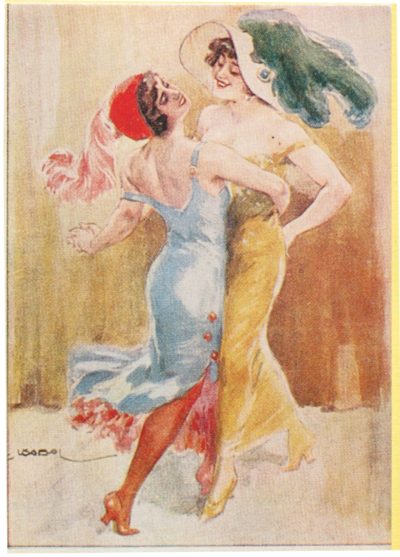 Milonga on tapahtuma, jossa tanssitaan argentiinalaista tangoa. Milongoissa usein käyviä ihmisiä kutsutaan milongeroiksi. Soitettava musiikki on enimmäkseen tangoa, valssia ja milongaa. Miehet ja naiset istuvat pöydissä tanssilattian ympärillä, ja tangon alkaessa soida miehet (yleensä) hakevat naisia tanssimaan. Perinteisesti – ainakin argentiinalaisissa milongoissa – tanssiinkutsu noudattaa tiukkaa sääntöä: mies katsoo valittua naista tietyltä etäisyydeltä ja nyökkää hänelle, toisin sanoen lähettää melkein huomaamattoman viestin kääntäen kerran nopeasti päätään tanssilattian puoleista olkapäätään kohti. Nainen voi hyväksyä tai hylätä kutsun, myös päällään, tai myös katsoa poispäin kieltäytymisen merkiksi. Tämä säästää miehen kiusalliselta tilanteelta, joka syntyisi jos hän kävelisi naisen pöytään ja joutuisi siinä torjutuksi. Milongoissa, joissa käy paljon nuoria, nämä säännöt ovat yleensä vähemmän tiukkoja, ja ihmisiä kutsutaan tanssimaan ilman muodollisuuksia; joskus jopa naiset hakevat miehiä tanssiin.
Milonga on tapahtuma, jossa tanssitaan argentiinalaista tangoa. Milongoissa usein käyviä ihmisiä kutsutaan milongeroiksi. Soitettava musiikki on enimmäkseen tangoa, valssia ja milongaa. Miehet ja naiset istuvat pöydissä tanssilattian ympärillä, ja tangon alkaessa soida miehet (yleensä) hakevat naisia tanssimaan. Perinteisesti – ainakin argentiinalaisissa milongoissa – tanssiinkutsu noudattaa tiukkaa sääntöä: mies katsoo valittua naista tietyltä etäisyydeltä ja nyökkää hänelle, toisin sanoen lähettää melkein huomaamattoman viestin kääntäen kerran nopeasti päätään tanssilattian puoleista olkapäätään kohti. Nainen voi hyväksyä tai hylätä kutsun, myös päällään, tai myös katsoa poispäin kieltäytymisen merkiksi. Tämä säästää miehen kiusalliselta tilanteelta, joka syntyisi jos hän kävelisi naisen pöytään ja joutuisi siinä torjutuksi. Milongoissa, joissa käy paljon nuoria, nämä säännöt ovat yleensä vähemmän tiukkoja, ja ihmisiä kutsutaan tanssimaan ilman muodollisuuksia; joskus jopa naiset hakevat miehiä tanssiin.
 Kuva: Miesparit tanssivat tangoa Rio de la Plata –joessa. Miesparien tanssi ja myös roolien vaihto oli tangolle ominaista sen alkuvaiheissa. Carlos Sauran elokuvassa Tango on kaunis miesten tanssikohtaus, jossa esiintyvät Julio Bocca ja Carlos Rivarola. Nykyajan trendi Tango Queer puolustaa tangon alkuperäisiä oikeuksia tanssia ilman vakiorooleja.
Kuva: Miesparit tanssivat tangoa Rio de la Plata –joessa. Miesparien tanssi ja myös roolien vaihto oli tangolle ominaista sen alkuvaiheissa. Carlos Sauran elokuvassa Tango on kaunis miesten tanssikohtaus, jossa esiintyvät Julio Bocca ja Carlos Rivarola. Nykyajan trendi Tango Queer puolustaa tangon alkuperäisiä oikeuksia tanssia ilman vakiorooleja.
Kuva: Naiset tanssivat tangoa neuvostoliittolaisessa postikortissa 1920-luvulta
Kuvat: Public domain
Rodolfo Medina, lokakuussa 2020
Käännös Kirsti Kallio
Aino Galleria – Tango Spirit exhibition – A brief story
In English
”Tango is a sad thought that is danced.”
– Enrique Santos Discépolo
“Here they say that Argentines and Uruguayans got off the boats! It is a melting pot where you find Italians, Spaniards, French, Poles, indigenous Americans … It is a very important mix that has its most complete expression in TANGO. ”
– Caloi
”Tango, Tango … you who were the confidant friend of his love … Tango, Tango, today I need your help to calm her pain!”
– Carlos Gardel
”For the boys to dance, today I will play Bandoneón, Life is a Milonga”
– Anibal Pichuco Troilo
“… The Milonga makes you fall in love: Tango, embrace, promise of something new !! …. ”
– Anonymous
Tango and me.
I was always very jazzy. Since I started to appreciate music more seriously, my absolute idol was Miles Davis (my black Lab’s name was Miles). Between this, and on the other hand, the fact that since I was a child, in my family Tango was not something that was heard …, only at approximately 55 years old I began to be attracted by that mysterious music, so powerful and heartbreaking at the same time, and it’s fascinating dance. When it “touched” and “entered” me, it did not come out anymore, a kind of emotional fascination. First I began to go to the Milongas attracted, as a new photographer, by that sort of similarity with the image acquired in the film ”Le Bal” by Ettore Scola. Large rooms, sometimes even sordid … with very different characters, many times unusual, the dancers, who were intertwined in sometimes bizarre embraces. Characters that seemed to me many times as coming from the antipodes. That seemed to me at first. But I soon realized the total contrary: Milongas are the “real people” (not a show at an artificial scenario) from everywhere, arriving to the encounter “vis a vis” and to the embrace with other unknown people and bodies, to start a close, flying and disciplined but creative and outmost sensual dance. May be some of what many of us dreamed before. This starting approach, the Embrace, is the very spirit and essence of Tango. Impossible to explain in words, intellectually. I was fascinated and touched!! All of this soon and strongly transmitted to me different feelings: emotion, vibration, passion, nostalgia, encounter, loneliness, closeness, embracing, happiness, enriching diversity, awareness. Something was there waiting for me too. It inspired me so very much. Soon I started with Tango lessons. Central is to say: I only could feel I was really starting to dance and fly, if I can say so, jaja (for my poor level obviously), at the very moment I could really listen to the Tango music and songs and let it resonate inside me, letting me be driven around by it, forgetting the steps and the strict techniques which occupied me so much. The Tango passion arrived at me!! Many times I came back home alone from work or so, and started to dance Tango also alone among the furniture!!! I felt really mobilized and excited. So many things and experiences are written on Tango and the Milongas! I could also tell so many more feelings and moments!
But let’s copy here some textual quotes from different people and sources, as well as on history of Tango and Milonga.
To dance Tango
“… .. A music that changes life! This is how an increasingly important group of young people and adults feels that they cannot conceive a weekend without going through the Tango dance floors …. ”
“…. What addictive element could this dance hide, at the Tango Social Club (the Milonga), which makes it almost a drug for those who dance it? What from that nightly ritual awakens the need to get back on track again and again? .. ” “I once heard that Tango recovered our sensuality. It is a beautiful moment, the one of looking deeply into each other’s eyes, before the embrace, then feeling yourself lost in it and letting yourself be carried away”.
Tango provokes you: it is a constant learning, and the embrace with each couple, a new experience, the encounter between two beings that connect together to the beat of the music, creating their own space, a little piece of the world that did not exist before.
“Once tango bewitches you, you only look forward to the next weekend. One fine day I realized that I carried tango shoes with me everywhere. Who knew where and when a Tango scene could arise? Sometimes you go to a class or you just want to break the habit, just for a little while. First I used to go several times a week and would stay for four or five hours, until very late. I was got drunk by the music, the atmosphere, the energy that is generated in there, the embrace, the dance, the unexpected encounter. It is a universe where sensory wins: the bodies that are blurred in the backlight, the colors, the glitter of the sequins and the shoe as a fetish. The milonga makes you addicted.”
”The Tango is in the Embrace” “For the fans of dancing Tango, popularly called “milongueros”, the emotional and physical experience produced by the encounter in the embrace with the couple, makes this practice so significant within their routine over time, that it becomes a style of lifetime ….”
“… it is not possible to talk about dancing Tango without referring (sometimes tangentially, sometimes directly) to that kind of metaphysical clash, that almost inexplicable abstraction that determines the game between two people, the connection and, finally, the meeting, always made official in the embrace, the famous Tango embrace, the two strangers bodies united, not for a game of sensual but artistic seduction: dance, dance. Of course, many things happen or can happen in an embrace, but Tango is one of the few spaces in which that embrace can begin and end there, without entailing frustration. What happens during a Tango can be complete and perfect without going an inch beyond that, since there is no search other than the connection through dance and in those specific minutes, in those 3 or 4 Tangos that make up a batch. Furthermore, a tight embrace, as close as physics allows it: Tango is the closest embrace that the world of dance can allow, always within the limits of dance and without entering into the game of seduction or sexuality.”
”What goes through the body in those first beats when we embrace each other before we start walking together on the track? What happens at the dance when that embrace melts? The experience of dancing Tango is non – transferable, no one can tell us what it feels like when we go out on the dance floor and meet that other to start moving embraced. The language of Tango is very particular and only those of us who dance it know that the embrace is an indispensable part of speaking this ”language” … ”
“…. But this adventure of meeting someone who also dances and whom we do not know, always brings up doubts and fears about whether the other is compatible with our dance or if we can come to understand each other. The approach, the contact, the meeting between two bodies has a lot to do with emotional commitment, with the heart, Tango is a pure dance that is related to feeling, so the meeting has to be a heart to heart encounter. This is how we connect with the pleasure of dancing.” “… Each one will try to embrace in their own way, and surely with time and experience, they will acquire personality.” “There are men and women in whose arms make you want to stay and live… ”
Brief historical synthesis on Tango and Milonga
Tango is a musical genre and a popular – urban dance from the “Riverplatense” Region, aside the Rio de la Plata River, between Argentina and Uruguay. It arose in the Río de la Plata between 1850 and 1890. All in the sociocultural framework of the great migratory waves from the most varied internal and external origins that this region received then, mostly men, a situation that will profoundly influence the way of relating between men and women …
There, the most diverse musical forms were freely fused (Uruguayan Candombe, Buenos Aires Candombe, Payada, Milonga, Habanera, Andalusian Tango, Mazurca, Polca, Vals, Zarzuela, Sainete, etc.), coming from the most diverse origins (Africans, Gauchos, Colonial Hispanics, Italians, Jews, Germans, Poles, Andalusians, Cubans, etc.), until the Tango was formed. It is estimated that the transition lasted around forty years to establish itself as a new musical genre, with its own identity, in the last decade of the 19th century. It was an eminently popular music, rejected and prohibited by the upper classes and the Catholic Church, which is why it developed in the poor neighborhoods of the suburbs (Los Arrabales), ports, brothels, old bars and prisons, where immigrants and the local population converged, mostly descendants of indigenous people and African slaves. This musical fusion created first the Milonga, with an agile rhythm, and then the Tango. The drums, flutes and guitars were quickly replaced by the piano, the violin and the bandoneon, the 3 basic instruments of Tango. The Tango genre was structured little by little until it became an urban art. Its musical form is binary (theme and chorus) and has a two-by-four measure. On a musical level, Tango is usually performed by a typical orchestra or sextet with instruments such as the bandoneon, the piano, the violin, the guitar and the double bass. As for the lyrics, its usually based on “Lunfardo” (the Rio de la Plata jargon, a slang of the working classes in Buenos Aires and Montevideo) and it expresses heartbreak or political claims.
As for the dance itself, it is a choreographic dance, which, idem, arose from the fusion of Afro – Rio de la Plata, Gaucho, Latin American and European dances and rhythms, which developed from the embrace of the couple. It is a sensual dance that, at the beginning of the 20th century, was practiced only in nightclubs, since it was prohibited by incitement to lust. There are multiple Tango steps that make it a very complex dance and not suitable for beginners.
The quick rise in its popularity enabled this famous dance to quickly expand out of South America, becoming a commonplace in Europe, North America, Japan and the rest of the world. With its rich history, numerous types and styles, and incredible appeal, Tango dance remains one of the most popular dances in the entire world. Finland for instance, has its own Finnish Tango!
Now, why was Tango banned here in Argentina? When Tango first emerged, the church banned it because it was the music of the “immoral” factions of society. It was no longer banned when the coup of 1930 occurred, but there was censorship of lyrics that supported populist ideas which used lunfardo. While the prohibitions of Tango in Europe indicated its growing diffusion in the countries that at that time were ”the center” of the world. Already in 1913 it was talked about the “Tangomania” that unleashed in Europe. The innovative self – confidence of dance and the questioning of the established customs regarding the relationship of people with their bodies, ”caused the greatest scandal that has ever been verified in the history of modern customs….”
The MILONGA – the place and the venue.
 Milonga is an event where Argentine Tango is danced. People who frequently go to milongas are called milongueros. The music played is mainly Tango, Vals and Milonga. Men and women sit at tables arranged around the dance floor, and at the beginning of a Tango, the men (usually) invite the women to dance. Traditionally – at least in Argentine milongas – the invitation to dance obeys a strict rule: the man, from a certain distance, looks at a chosen woman and ”nods” her, that is, he gives her an almost imperceptible signal, by turning rapidly and only once the head towards the shoulder corresponding to the side where the dance floor is located, and the woman can accept the invitation or deny it (also with her head), or look away to also reject the invitation. This avoids the man the embarrassing situation of being rejected after having walked to the table of the woman, and the woman the one of rejecting it directly, if that were the case. In the milongas frequented by younger audiences, these rules are usually less strict and people are invited to dance regardless the previous rules, and sometimes it is even the women who invite the men to dance.
Milonga is an event where Argentine Tango is danced. People who frequently go to milongas are called milongueros. The music played is mainly Tango, Vals and Milonga. Men and women sit at tables arranged around the dance floor, and at the beginning of a Tango, the men (usually) invite the women to dance. Traditionally – at least in Argentine milongas – the invitation to dance obeys a strict rule: the man, from a certain distance, looks at a chosen woman and ”nods” her, that is, he gives her an almost imperceptible signal, by turning rapidly and only once the head towards the shoulder corresponding to the side where the dance floor is located, and the woman can accept the invitation or deny it (also with her head), or look away to also reject the invitation. This avoids the man the embarrassing situation of being rejected after having walked to the table of the woman, and the woman the one of rejecting it directly, if that were the case. In the milongas frequented by younger audiences, these rules are usually less strict and people are invited to dance regardless the previous rules, and sometimes it is even the women who invite the men to dance.
 Image – Several couples of men dance the Tango in the Rio de la Plata. The dance between men and the reversal of roles, was a characteristic of Tango from its beginnings. In the film Tango, by Carlos Saura, there is a beautiful dance scene between men, performed by Julio Bocca and Carlos Rivarola. The contemporary trend of Tango Queer vindicates these original practices to propose a dance without fixed roles.
Image – Several couples of men dance the Tango in the Rio de la Plata. The dance between men and the reversal of roles, was a characteristic of Tango from its beginnings. In the film Tango, by Carlos Saura, there is a beautiful dance scene between men, performed by Julio Bocca and Carlos Rivarola. The contemporary trend of Tango Queer vindicates these original practices to propose a dance without fixed roles.
Image – Women dancing tango on a postcard from the Soviet Union in the 1920s.
Images: Public domain
Rodolfo Medina, October 2020

